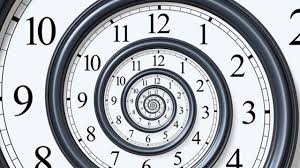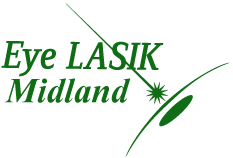
by EyeLASIK | Mar 31, 2016 | eye health

Don’t be FOOLED by eye health!
April Fools’ Day is just around the corner but EyeLASIK has some fun eye health facts that are no joke! Read ahead for more.
- Those little floaters you see occasionally in your vision aren’t foreign particles. They’re actually little bits of collagen. Floaters become more common as you age. However, if you notice larger ones or they become more frequent, be sure to set up an appointment with your doctor. This could be a sign of a detached retina. LASIK can also help with floaters.
- Have you ever encountered a person with two different eye colors? That person has a condition known as heterochromia. There are three different kinds of heterochromia: complete (where one iris is a totally different color than the other), sectoral (where a part of one iris is a different color than the remainder), and central (where different colors radiate from the pupil like bicycle spokes). You can read more about it here.
- According to the World Health Organization http://www.who.int/features/factfiles/blindness/en/), 80% of all vision-impairment and blindness in adults is preventable. The reason this number is so high is because many developing countries do not have access to basic eye health facilities. There are also other factors to consider, including diseases such as river blindness and conditions like cataracts.
- LASIK’s recent history began in the 1970’s. A doctor named Stephen L. Trokel was introduced to a piece of new technology known as the excimer laser. While it took many years and experiments to ensure accuracy for patient safety, the first recent photorefractive keratectomy (or PRK) operation occurred in 1988. The PRK was LASIK’s predecessor! A woman with malignant eye cancer volunteered to allow the doctors to test their new technology prior to her oncologist removing her eye. It was a success and the United States fully approved the procedure in 1995.
Well, the joke’s on us, but this blog is done! Everyone at EyeLASIK wishes you a happy (and hilarious) April Fools’ Day!

by EyeLASIK | Mar 16, 2016 | eye health

Eye exams are important, even after LASIK!
In short, the answer is yes. Eye exams are necessary after LASIK and today’s blog will go into even further detail.
Eye Exams Are Just For Glasses Or Contacts, Right?
Wrong, wrong, wrong! While most patients go to the ophthalmologist each year to renew their prescription for glasses or contacts, it’s critical to make an exam appointment each year. This includes patients who have had LASIK.
Plan Your Eye Health With Your Provider
Eye health is critical and isn’t just limited to correcting vision issues. LASIK is used to improve refractive errors but it does not diagnose, prevent, or correct many other eye diseases. After you’ve had LASIK and your eye health is normal and healthy, your provider might suggest less frequent visits. However, it’s important to discuss family history and your lifestyle habits to give your provider a more accurate picture of your risk factors.
If I’ve Had LASIK, I Don’t Need To Go
Sorry, but you’re wrong again. Not only does your ophthalmologist determine your vision, they also check for a variety of ocular diseases. However, annual examinations can be used to diagnose several different conditions, including:
- Glaucoma – This disease causes fluid to build up in the front part of your eye. This can lead to damage to the optic nerve and can eventually cause blindness.
- Cataracts – Cloudiness of the eye’s natural lens, which lies behind the pupil and iris, occurs when a patient has cataracts. The result is a “milky” looking eye. Untreated cataracts contribute to half of the world’s blindness statistics.
- Diabetic retinopathy – Blindness is a known side effect for diabetic patients. Diabetic retinopathy damages light-sensitive nerves of the retina, causing dark spots or “floaters” in the vision.
- Macular degeneration – While this usually occurs in older patients, macular degeneration is caused by damage to the macula portion of the retina.
EyeLASIK 100% believes that eye exams are necessary after LASIK, even after you’ve improved your vision with the procedure. We encourage you to continue your annual eye exams as a positive, preventative step in your healthcare routine.

by EyeLASIK | Feb 29, 2016 | Eye LASIK, laser vision correction surgery

Make Time For LASIK!
As we’ve previously discussed, you should expect to schedule some time for recovery time after your LASIK procedure, but you may be wondering…when is the right time for LASIK? Today, we’re going to share our thoughts on the optimal time to set up your procedure!
Talk With Your Surgeon Beforehand
If you’re a runner and you know you have a marathon coming up, your doctor might recommend scheduling your procedure until after you’ve completed your race. The surgical team at Eye LASIK can work around your schedule and we know that there are certain activities that are important to you. However, we also want to ensure that your eyes are properly healed before fully releasing you. During your consultation, discuss any upcoming plans with your surgeon. Your doctor will be able to help you assess the best time to complete your procedure.
Weather Is Definitely A Factor
After corrective surgery, your eyes will be more sensitive than usual and you will need to take additional measures to protect them. Wind, sun, and dust are all factors to consider before your procedure. Since you’re in West Texas, you already know that we often have windy conditions during the spring. In order to protect your eyes from environmental factors like wind, we recommend using sunglasses with UV protection any time you go outside for at least the first week or two after your procedure.
Plan Your Activities Accordingly
Are you a big fan of swimming? Enjoy riding dirt bikes? What about hiking? These are all great ways to exercise and Eye LASIK couldn’t encourage you more to get your heart rate up. However, for a few weeks after your procedure, be sure to limit time spent around water or dust to prevent any odd particles from settling in your eyes. They will still be healing and this is to prevent any sort of infection.
We hope we’ve been able to help answer some questions on when the right time for LASIK is for you. Don’t forget, we offer complimentary consultations to assess your candidacy for the procedure! Jot us down in your planner today!

by EyeLASIK | Feb 15, 2016 | Health Facts

Wear your shades!
Everyone has heard that 80’s song, “The Future’s So Bright, I Gotta Wear Shades.” They aren’t wrong either! Even though we’re technically still in February, there are lots of benefits of great sunglasses, all year through…and Eye LASIK is here today with some of them!
Keep Your Squinting At A Minimum
Bright lights and sun glare can cause you to squint, which is your body’s natural instinct to help protect your eyes. However, while you’re squinting, your eyes will strain in order to be able to see properly. It’s important to rock out some great sunglasses to prevent this issue. Another added benefit of reducing squinting is that it prevents crows’ feet and wrinkles around the eyes!
Divert The Debris
West Texas has crazy weather, with changes from moment to moment. There’s always a lot of dust, pollen, and other things blowing around in the crazy wind storms…and sunglasses can help prevent a good portion of that from getting into your eyes! This debris not only causes irritation, but it can also cause scratches to your eyes or infections if your eyes aren’t properly flushed out.
Say Bye-Bye To Dry Eye
Wearing shades can significantly reduce the possibility of dry eyes. Dirt and other environmental conditions such as sun, snow, or wind can be a big contributing factor to dry eye. Not producing enough tears can be very detrimental to your eyes and can cause scratches and further irritation. Sunglasses prevent a great deal of these irritants from even entering your peepers.
Best Of All…You Look Awesome
Sunglasses are a great accessory! Not only are they a great way to keep your eyes protected, they can make you look polished and finish of your look. From aviators to cat eyes, wayfarers to oversized shades…sunglasses provide safety for your eyes and an excellent fashion tip.
While we’re currently in the in-between for seasons, Eye LASIK encourages you to wear sunglasses year-round! Protect your peepers and rock your outfit with some great shades!

by EyeLASIK | Feb 1, 2016 | Procedure

Resting after the procedure is important.
Congratulations! If you’re reading this, it means you’ve already read Part 1 and Part 2 of our blog on what to expect from LASIK. Today, we’re focusing on what will happen after your procedure.
Don’t LASIK And Drive
As we’ve stated before, a responsible adult should be available to drive you to and from your surgical appointment. Your vision will be hazy and your eyes do not need to strain excessively. Therefore, driving is considered extremely hazardous.
All You Have To Do Is Relax
Once you get home, all you need to do is sleep. Plan on resting for 3-4 hours with your eyes closed to prevent squinting and straining. You can expect to have blurry vision for approximately the first 24 hours. Other patients have reported halos, light sensitivity, dry eye feeling, and the general feeling of discomfort. The majority of the irritation will occur a few hours post-op and subside after a few hours.
You will be prescribed special eye drops that contain an antibiotic and a moisturizing agent in them; we recommend using these per the doctor’s instructions to prevent discomfort. You can also take over-the-counter acetaminophen, ibuprofen, or aspirin to ease any pain, as well.
Add It To Your Calendar
Your surgeon will set up a post-operative visit with you 24-48 hours after your procedure. Be sure to bring all of your prescriptions with you to this appointment. Don’t be alarmed at the redness or discomfort following surgery. This is completely normal, but be sure to keep note of any changes or anything unusual.
Other Things To Consider
- Avoid driving until you’re 100% confident in your vision (this various from patient to patient).
- DO NOT RUB YOUR EYES! This causes irritation and can introduce bacteria into the surgical site, which could cause further damage and prevent proper healing.
- No cosmetics or lotions for 7-14 days after the procedure.
- Wear sunglasses to prevent additional light sensitivity.
- Avoid situations with lots of dirt or dust (easier said than done in West Texas!).
- No swimming, hot tubs, or other situations where water could get into your eye (especially chlorinated water) for 3-6 weeks. Exercise caution when showering or bathing as to not to get soap or water in your eyes.
- Limit exercise and contact sports that could cause eye strain or injury for 7-14 days.
- Use your drops!
- Reading, watching television, and working on devices is acceptable as long as you take frequent breaks.
- Watch out for small creatures, both the two-legged and four-legged varieties! They can accidentally hit your eyes.
Eye LASIK encourages you to call if you have any questions regarding your post-operative care. We are so excited to have finished our blog series on what to expect from LASIK. Now that we’re done, the only thing we’re lacking is…YOU! We offer complementary consultations and we’re excited to meet you soon!








